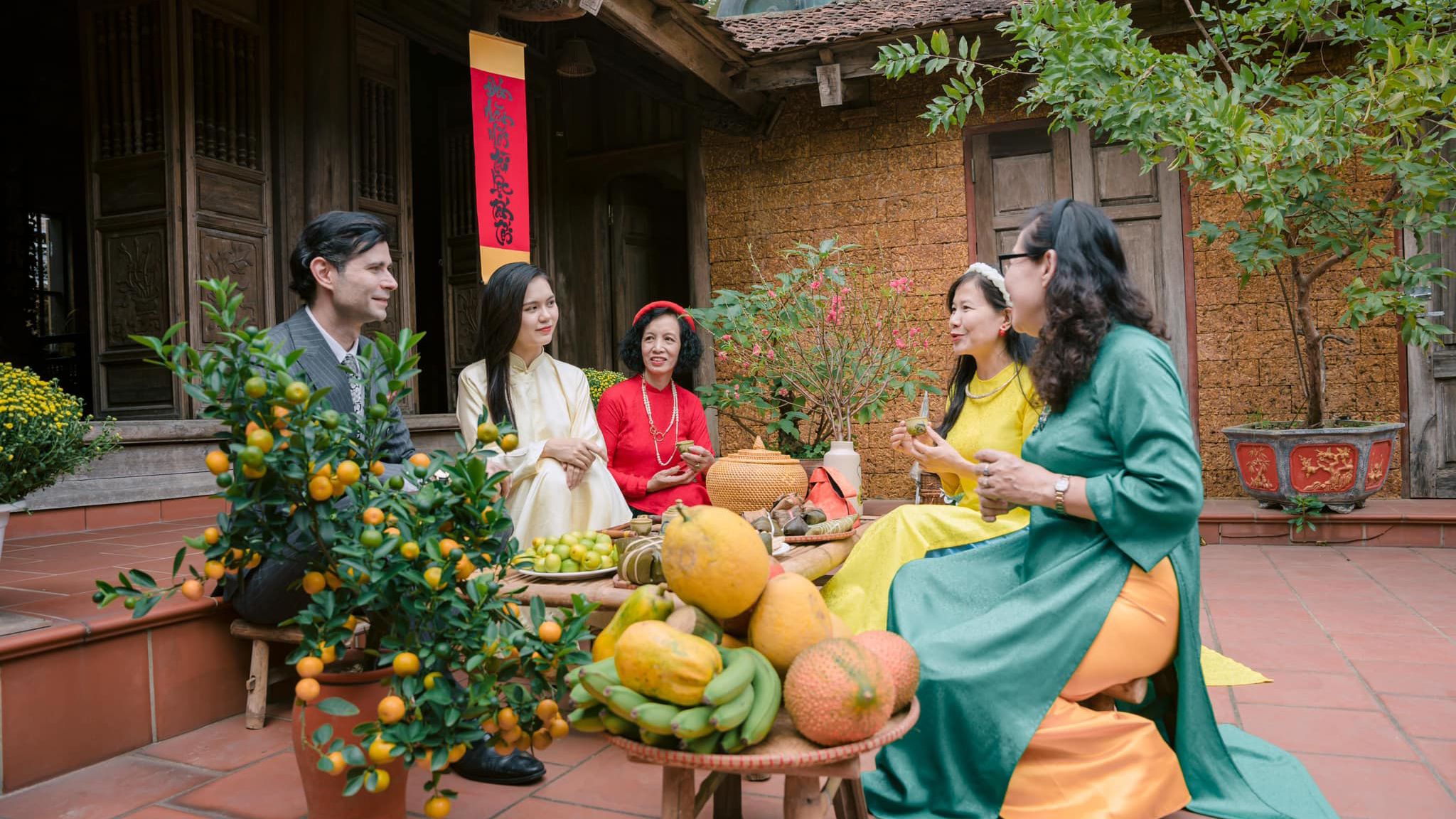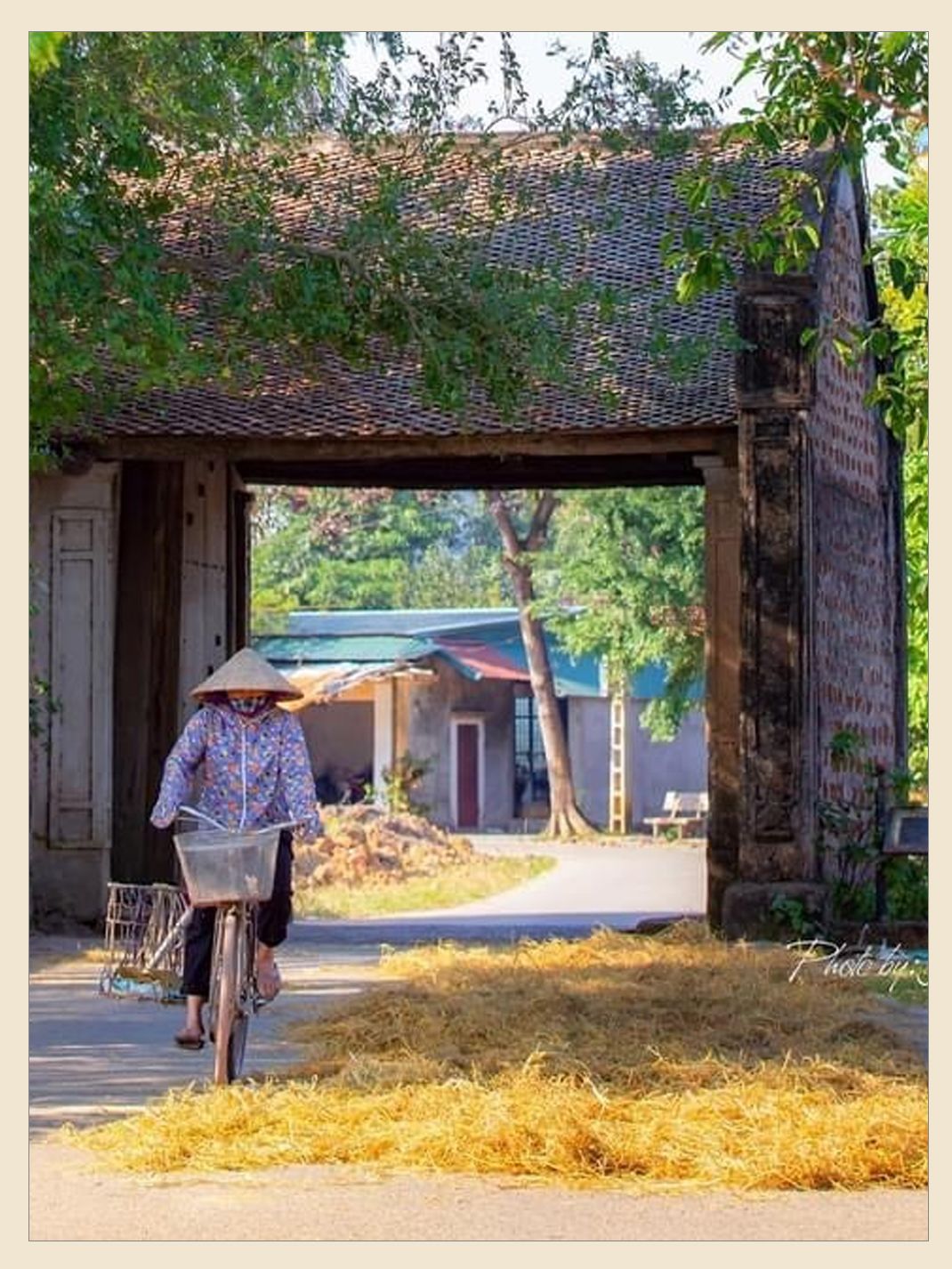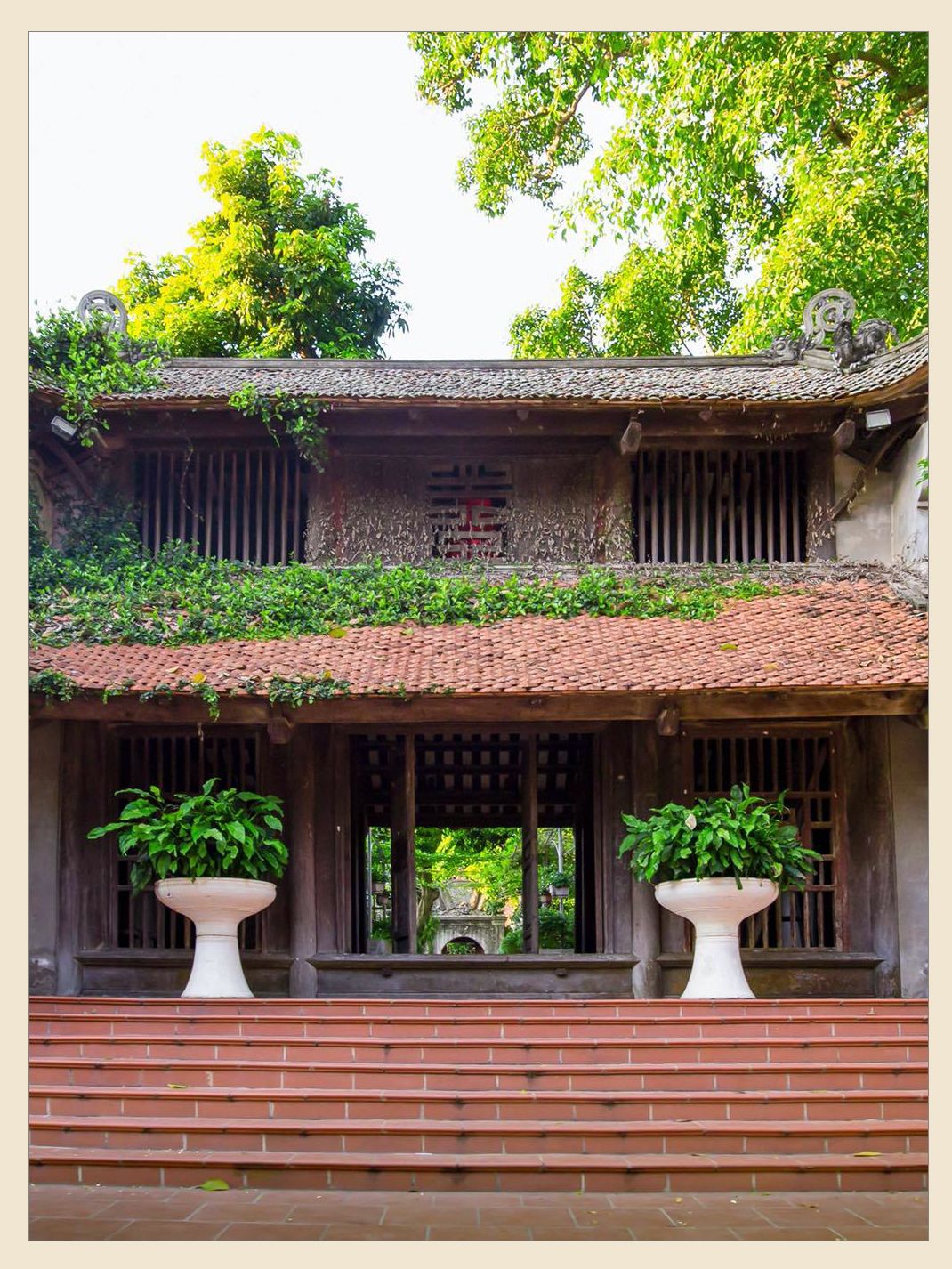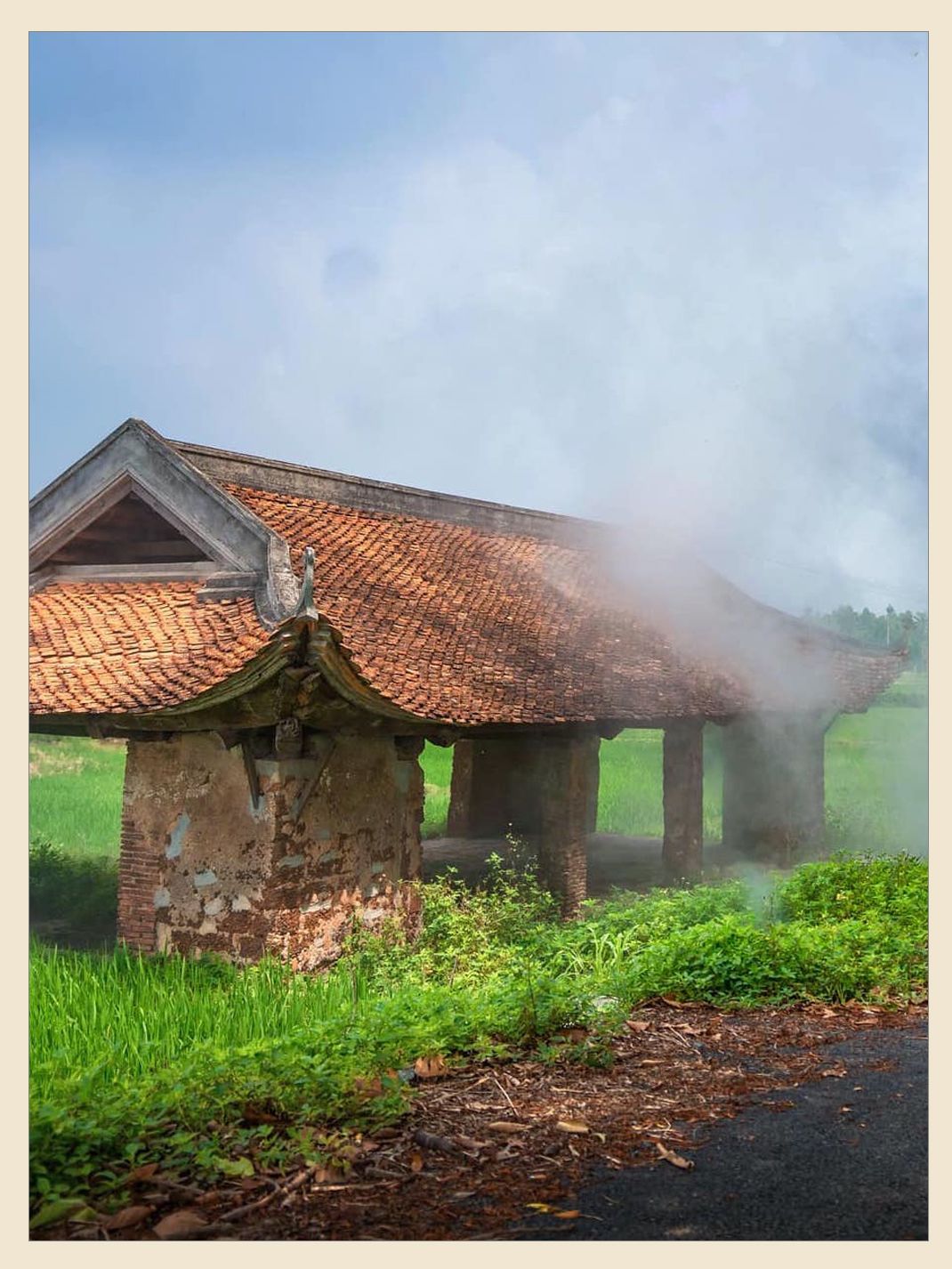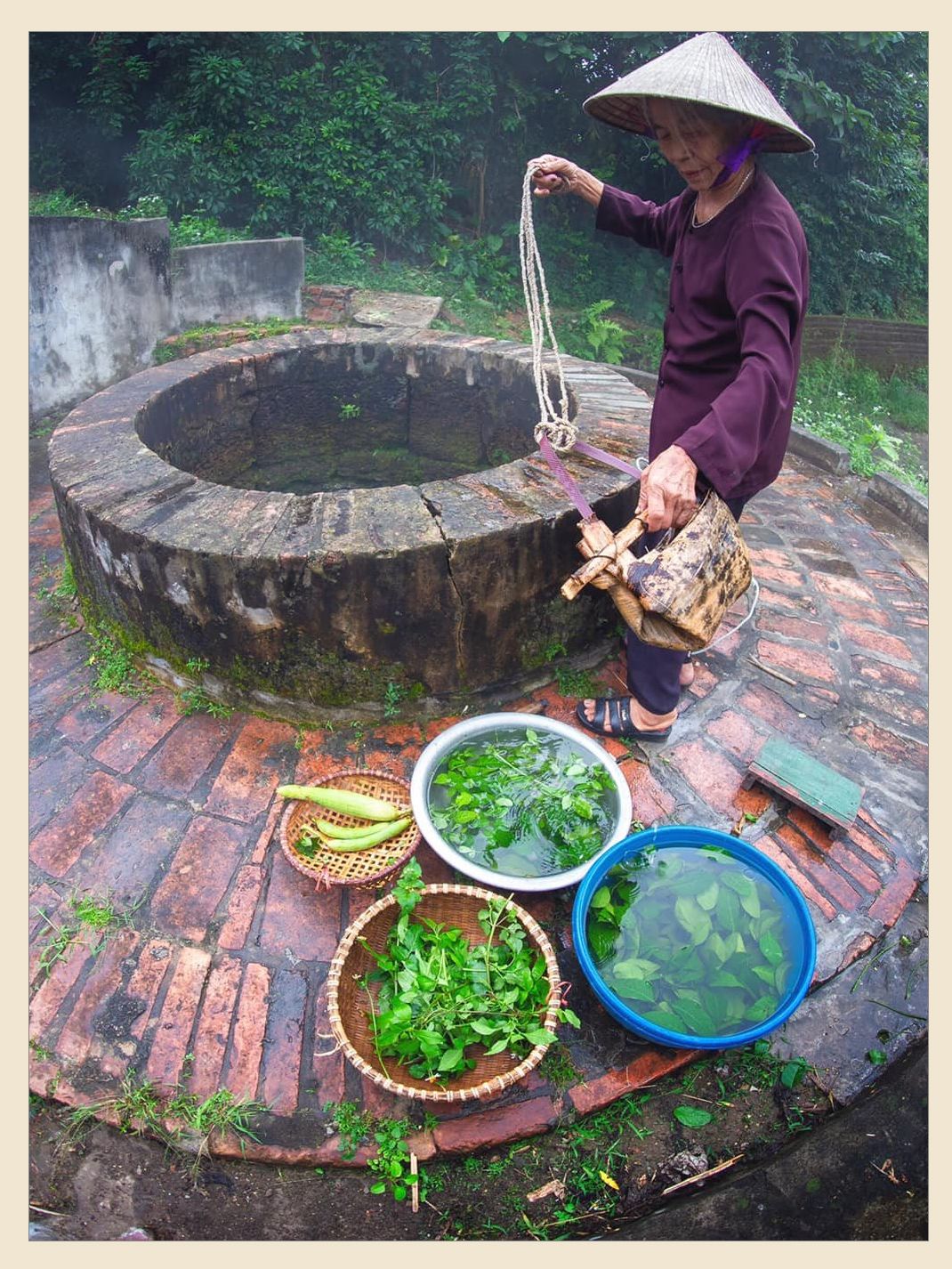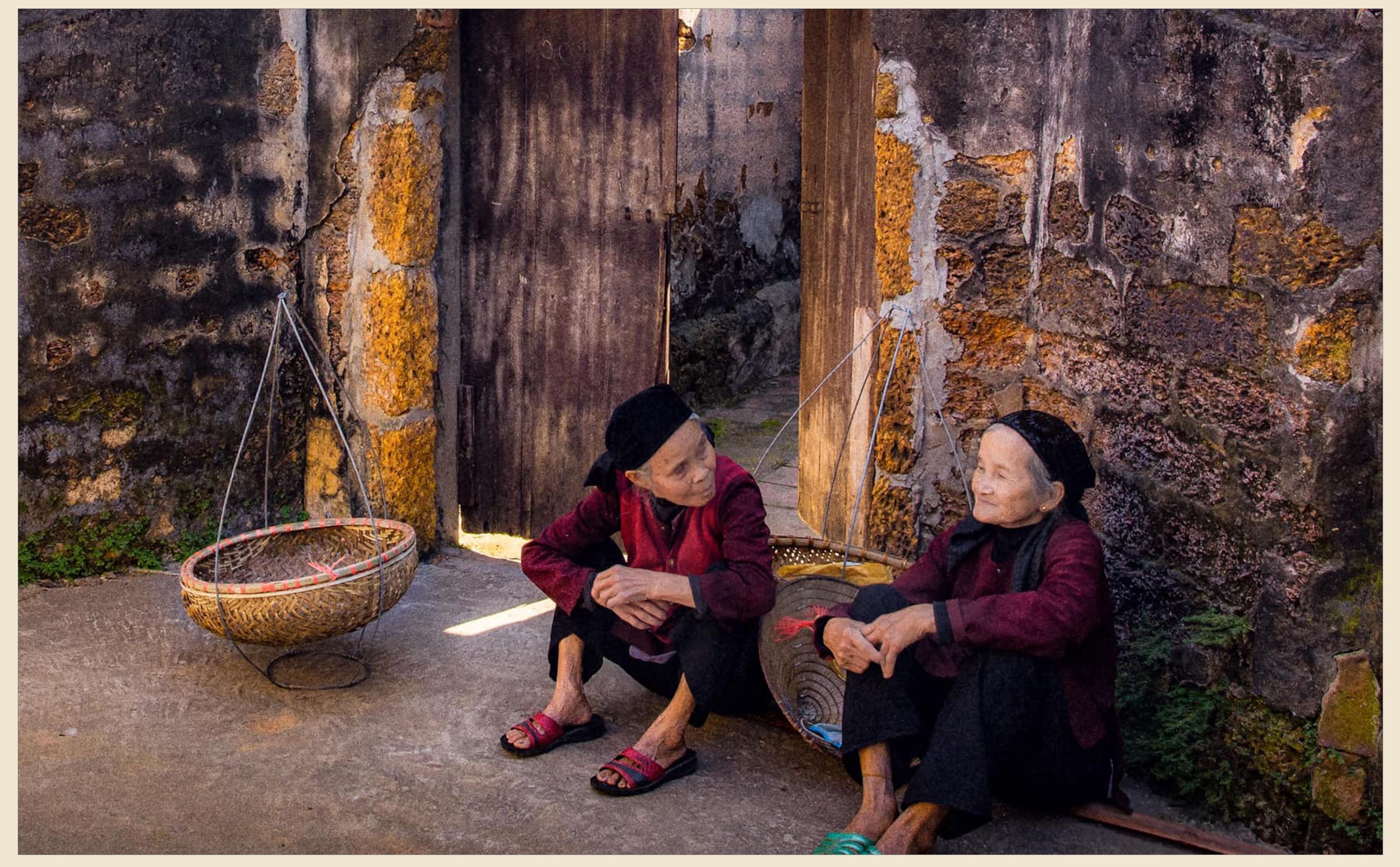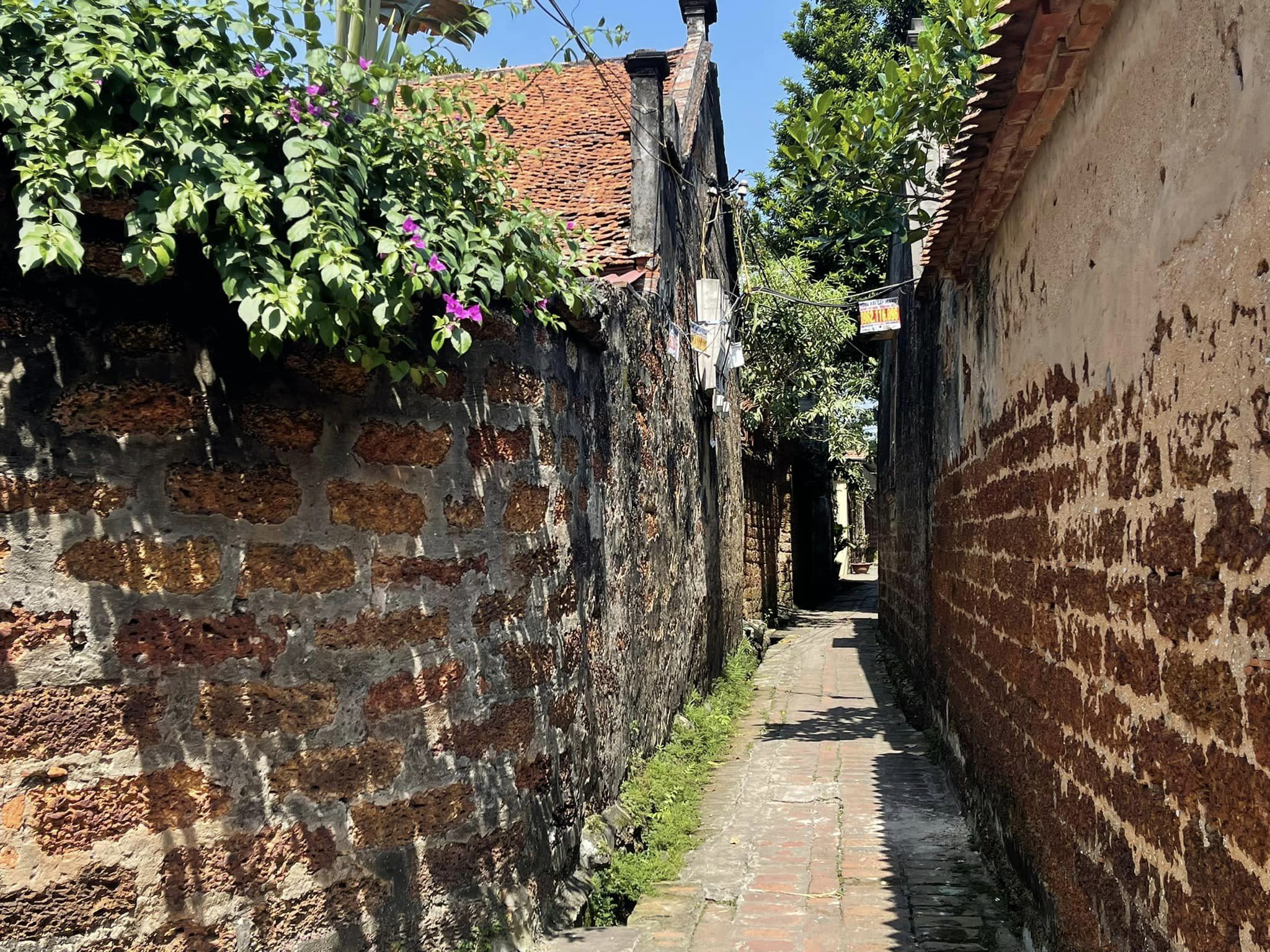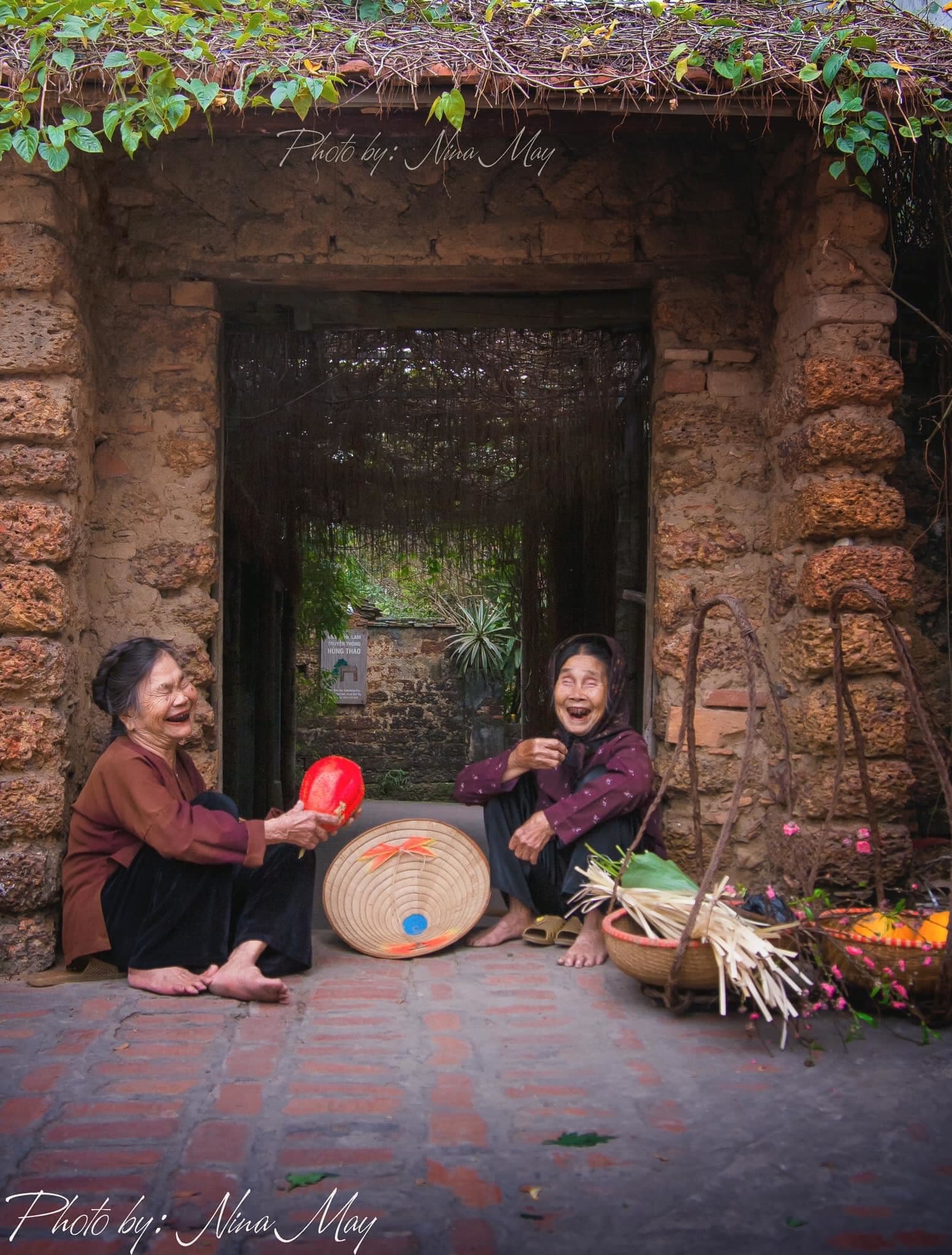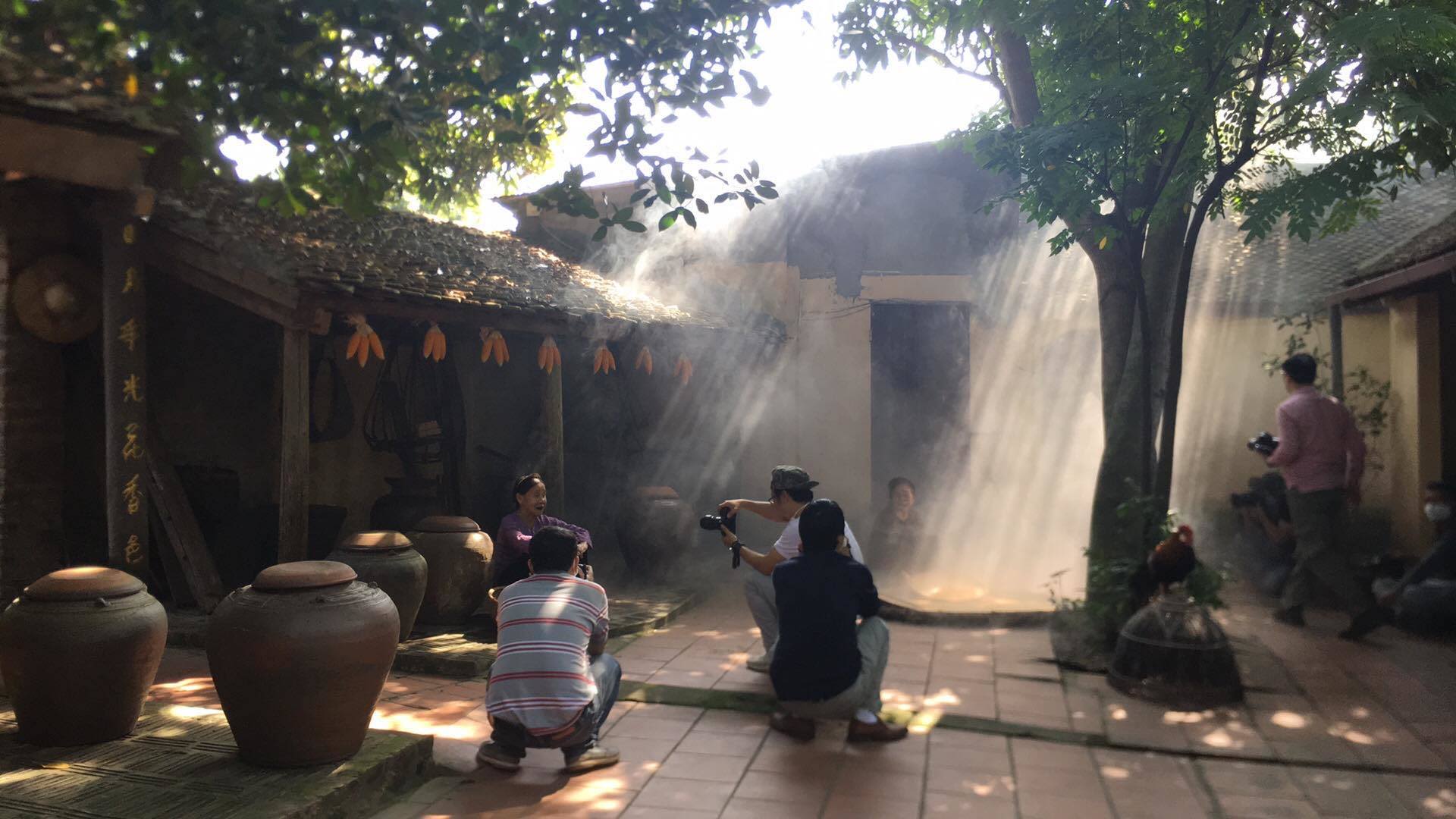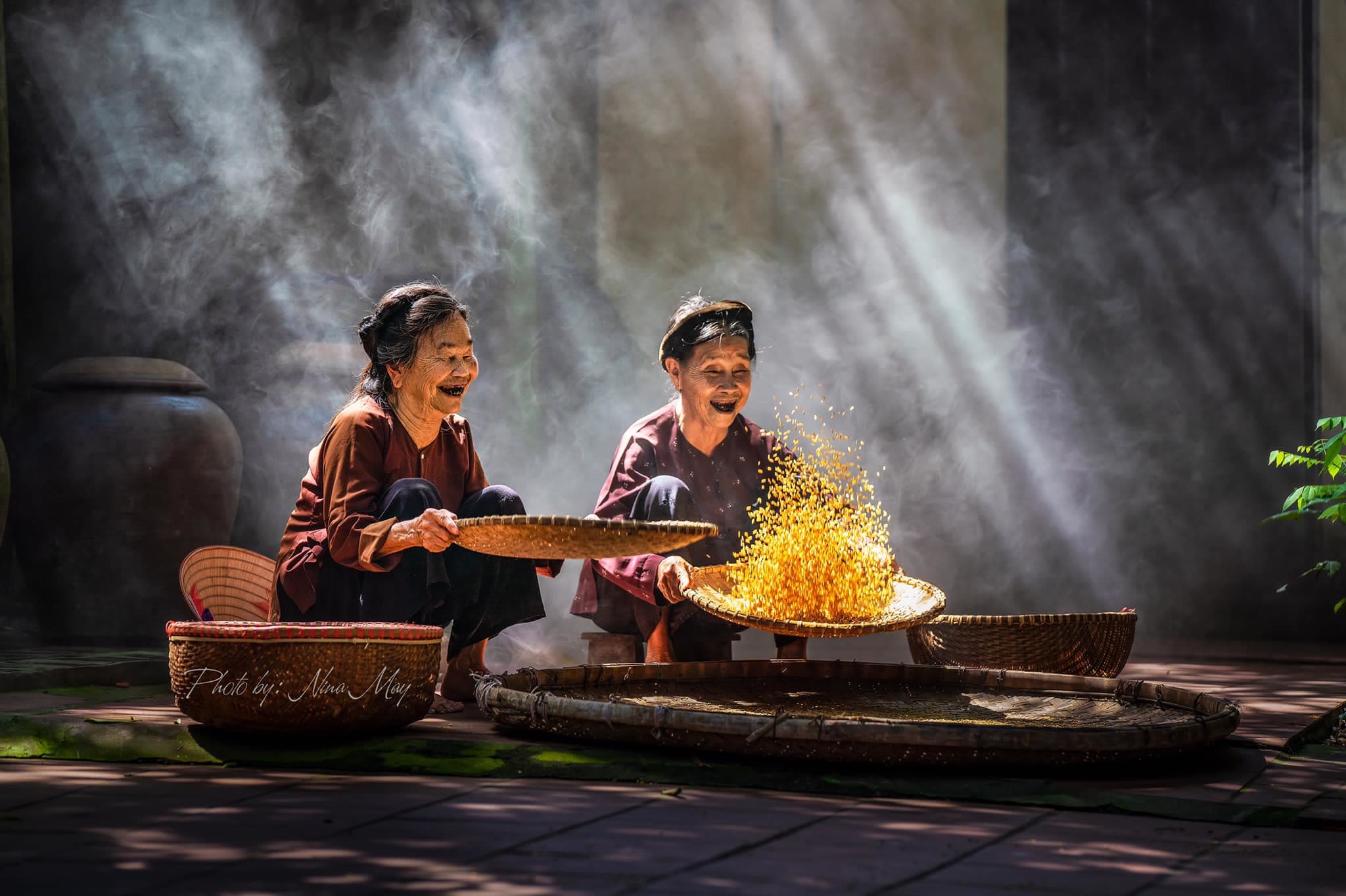Duong Lam Ancient Village
The soul of Vietnamese villages
in Duong Lam
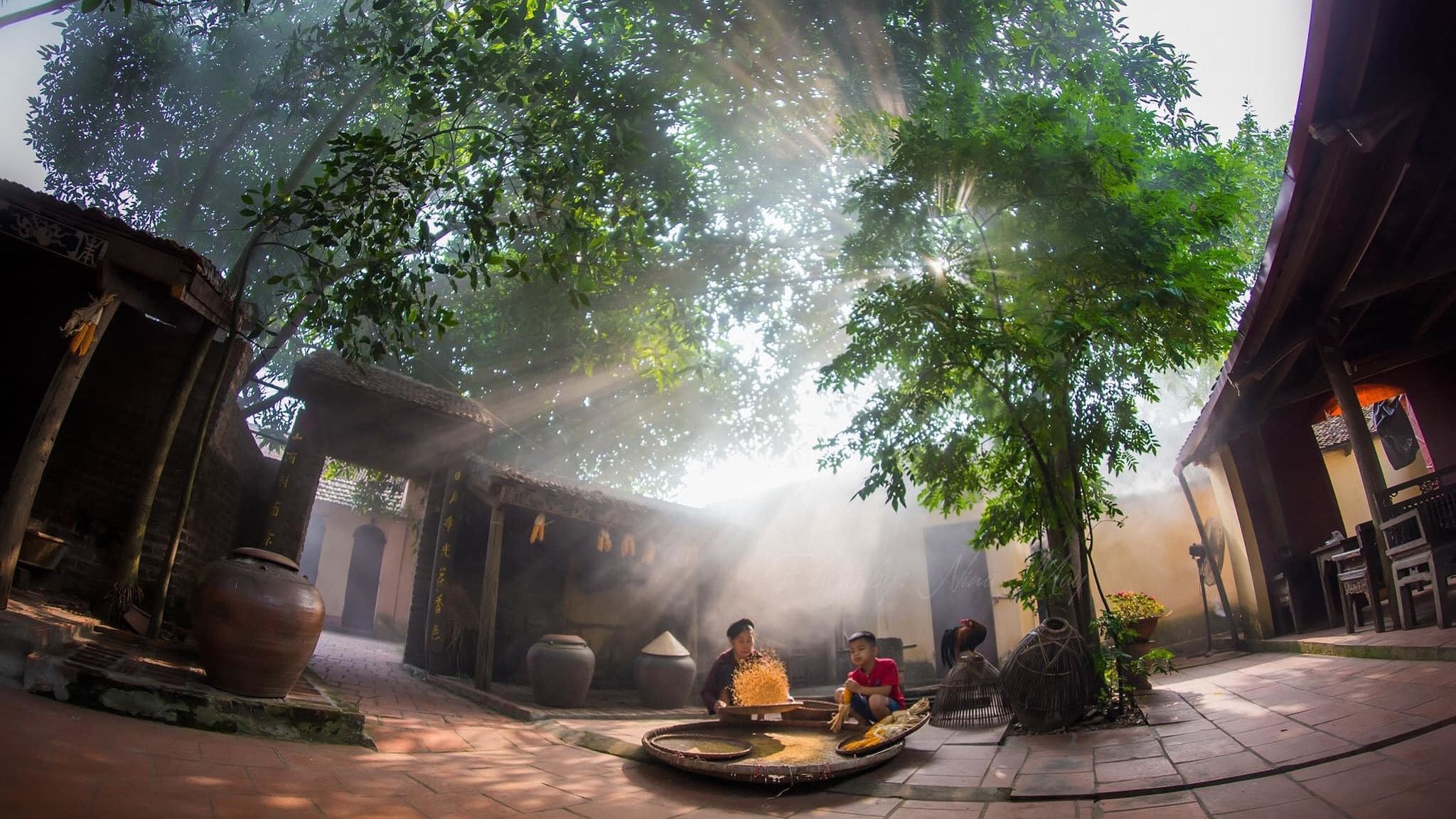

Duong Lam is compared to a living museum of rural life in northern Vietnam.
There are few villages like Duong Lam in which the whole spatial structure and institutions of an ancient Vietnamese village, such as the village gate, alley gates, temples, shrines, wells and ancestral houses, are kept largely unchanged. Duong Lam is compared to a living museum of rural life in northern Vietnam. It is the home of two kings with great contributions to the struggle for national independence: Phung Hung and Ngo Quyen. Visitors come to Duong Lam to enjoy the experience of travelling back in time.
Living museum of ancient Vietnamese village life
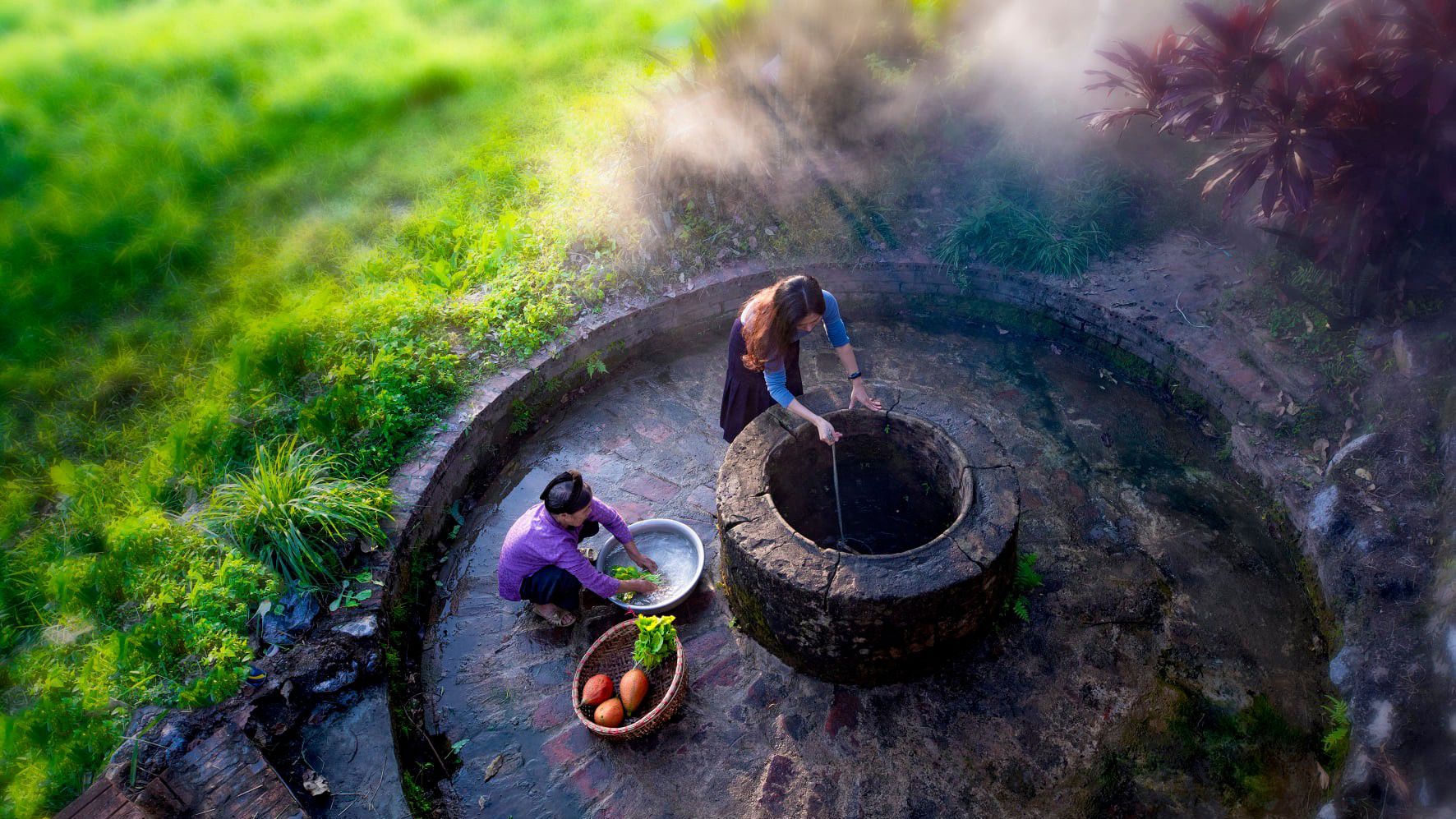

Located about 50 kilometres to the west of central Hanoi, Duong Lam is full of traditional Vietnamese cultural heritages. It is a rare village where all the structures related to ancient cultural, social and spiritual life are still retained today, including the village gate, communal houses, Buddhist temples, Taoist shrines, ancient wells, and ancestral temples. Duong Lam actually consists of nine villages, of which Mong Phu, Dong Sang, Cam Thinh, Doai Giap, and Cam Lam are where most heritage sites and ancient houses are concentrated. The best among them is Mong Phu.
Mong Phu Village welcomes visitors with an ancient gate hidden beneath a wide-canopied old tree, next to a row of aged toothbrush trees. In front of the gate are agricultural fields and lotus ponds, which create a harmonious landscape much like a countryside painting. The Mong Phu village gate resembles a house, with traditional tiles on top, but only has walls on both sides and a system of pillars in front and back to achieve stability. The Mong Phu village gate is not large, but carries a rustic beauty, with bare laterite stone walls.
Passing through the village gate feels like entering another world, with the characteristic brown colour of laterite stone walls and antique roof tiles.
Located in the village centre is the Mong Phu communal house, which is unique in that it has no surrounding walls, but open railings, which are convenient for community activities.
According to old stories, Mong Phu Village is situated on a strip of dragon-shaped land. The dragon’s head is where the Mong Phu communal house is located. The communal house was built in 1684 during the reign of Emperor Le Hy Tong. From this central area, bright red brick-paved roads radiate out to the small hamlets.
The village gate (Photo: Nina May)
The village gate (Photo: Nina May)
Duong Lam welcomes guests with a centuries-old ancient gate. (Photo: Nina May)
Duong Lam welcomes guests with a centuries-old ancient gate. (Photo: Nina May)
In every corner, people can see ancient houses.
Most of these houses are built with traditional materials of Duong Lam, such as laterite. The system of columns and rafters are usually made of jackfruit wood or chinaberry wood, with a few wealthier families using ironwood. The roofs are typically covered with traditional tiles. The most common architectural style is the five-room house. The three main rooms serve as places for worship and receiving guests, while the two side rooms are for personal activities. The skilful Vietnamese craftsmen of the past didn’t forget to meticulously carve simple yet soft patterns on many wooden parts of the house, adding charm to the building.
Duong Lam villagers make ‘chung’ cake in celebration of the Lunar New Year Festival. (Photo: Nina May)
Duong Lam villagers make ‘chung’ cake in celebration of the Lunar New Year Festival. (Photo: Nina May)
The oldest houses in Mong Phu have now become favourite tourist destinations, including those of Nguyen Van Hung, Ha Huu The, Ha Nguyen Huyen, and others. The oldest house in Nguyen Van Hung was built in 1649. Despite almost 400 years of weathering, it has been well preserved. Like many other ancient houses in Mong Phu, as well as Duong Lam in general, Hung’s house features a small gate leading to the courtyard and garden area. Duong Lam is famous for its soy sauce-making craft, so in almost every courtyard, one can see large jars of soy sauce, made for both personal use and sale. The courtyards filled with soy sauce jars have now become popular check-in spots for many tourists.
In Duong Lam, people can not only see the ancient houses but also easily explore old traditions of daily life.
Herds of cattle leisurely pass through the village gate to graze in the fields. Elderly people sit by the tea stalls at the village entrance while old ladies chew betel nut. Old men with white hair walk with canes on red brick-paved roads. These are something that people typically only see in films or documentary photos.
In addition to the communal house and ancient homes, Duong Lam also has a large pagoda called Chua Mia (Mia Pagoda). It houses 287 statues, including 174 gilded terracotta statues, 107 wooden statues, and six bronze statues. Mia Pagoda is well known both within and outside the region for its sacredness and ancient beauty. If Duong Lam Commune, particularly Mong Phu Village, is considered a museum of ancient Vietnamese villages, then Mia Pagoda is a museum of ancient Buddhist statues.
Imprints of historical figures


Duong Lam is known as the “hamlet of two kings”. It is the hometown of Bo Cai Dai Vuong Phung Hung and Ngo Quyen Vuong.
Phung Hung was born during a time of foreign invasion (8th century) and developed a strong desire to fight for independence and autonomy. He recruited heroic warriors and led an uprising against the oppressive rule of the Tang Dynasty. His insurgents successfully expelled the Tang invaders from Tong Binh citadel (now Hanoi).
Phung Hung built the country's independence and autonomy for 7 years before passing away. In his hometown of Cam Lam Village, the people built a temple to commemorate him. The current temple has the architectural style of the 19th century, including the following items: Nghi Mon Gate, Ta Huu Mac, Dai Bai, and Hau Cung. Phung Hung Temple Festival is held on the 8th day of the first lunar month (the death anniversary of Bo Cai Dai Vuong) with a large number of people from all over the locality attending.
Just a short distance from Phung Hung Temple is Ngo Quyen Tomb (Ngo Vuong, 898-944). Ngo Quyen is known as the founder of the nation, as the first person to establish the country's independence after a thousand years of Chinese domination. After defeating the Southern Han army on the Bach Dang River, Ngo Quyen proclaimed himself king and established the capital in Co Loa with the desire to inherit the ancient Au Lac state. Ngo Quyen Tomb was built in the early 20th century, following the architecture of a four-roofed stele house. The temple was built about 100m from the tomb. In front of the mausoleum is a large field located between two hillsides, next to which is Ho Gam Hill, which is said to be the place where Ngo Quyen and his friends used to herd buffaloes, cut grass, and practice martial arts when they were young. Notably, there is also a row of 18 ancient duoi trees, which is said to be where Ngo Quyen ordered his soldiers to tie war elephants.
Duong Lam is worthy of the title of
"A SACRED LAND THAT PRODUCES TALENTED PEOPLE"
Duong Lam is worthy of the title of “a sacred land that produces talented people”. This is also the hometown of Giang Van Minh (1573-1638), a famous diplomat of Vietnam. When he went to the Ming Dynasty as an envoy, the Ming King gave the antithetical couplet “Dong tru chi kim dai di luc” (The bronze pillar is still covered with green moss) recalling the event of Ma Vien oppressing Vietnamese people during the time of the Trung Sisters, showing the arrogance of the “celestial dynasty”. Giang Van Minh responded with the sentence: “Dang Giang tu co huyet do hong” (The Bach Dang River has been red with blood since ancient times). Humiliated, the Ming King killed him. Respecting the man of integrity, the Ming Dynasty embalmed Giang Van Minh with mercury and sent an embassy to bring his body back to the country. The traces related to Giang Van Minh are all preserved by the people, including the tomb, the temple where the funeral was held, and the temple worshiping Giang Van Minh.
“Unique” small corners
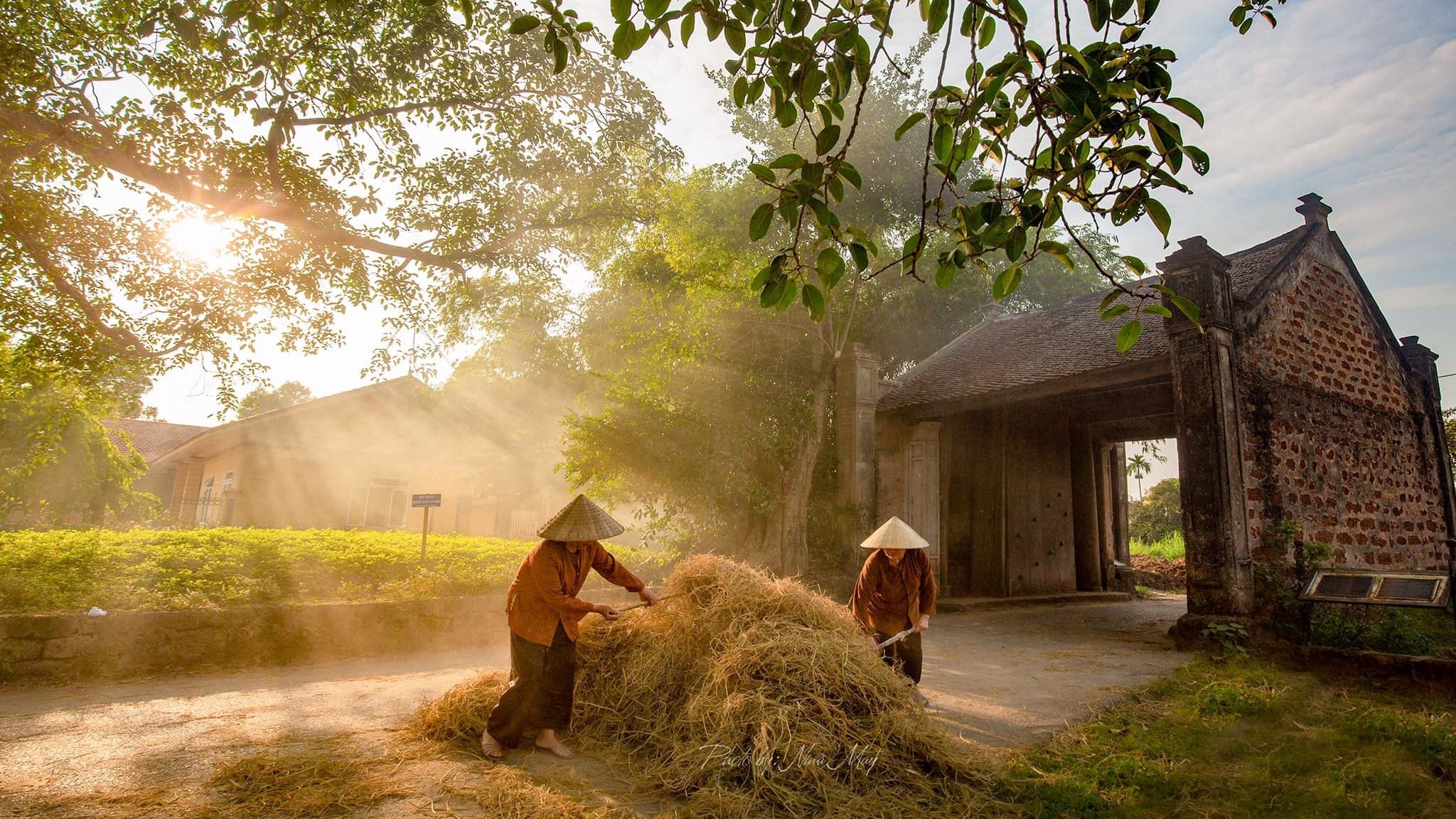

The Lo Bieu House (Photo: Nina May)
The Lo Bieu House (Photo: Nina May)
A well in the village (Photo: Nina May)
A well in the village (Photo: Nina May)
The place where the funeral was held for Giang Van Minh was a temple, which the people called Giang Temple. This is one of many temples still preserved in Duong Lam. In addition to this temple, there are many other temples. Mong Phu Village alone has three temples: Ro Temple, Dong Nang Temple, and Lo Bieu Temple. In the local custom, if a villager dies far away, he or she is not allowed to be brought into the village. To solve this problem, the villagers built a temple. The most beautiful temple today is Lo Bieu Temple.
The Lo Bieu House was built of laterite bricks, like a miniature communal house, with four roofs and curved roof edges. To serve public purposes, the four roofs were built on laterite pillars, without walls. The walls were only reinforced at the corners. Lo Bieu House is beautiful, so many people visit, even though it is originally a space for the deceased.
Notably, there are few villages in the Northern region that still have as many ancient wells as Duong Lam.
Notably, there are few villages in the Northern region that still have as many ancient wells as Duong Lam. The wells in Duong Lam do not have well walls like those in other areas because the underground rock is very hard. The well walls are made of laterite blocks or red bricks. Over time, the wells have become ancient.
Among the ancient wells, two wells are considered as the eyes of the dragon, "Phu Hamlet well" and "Mieu Hamlet well". Phu Hamlet well is considered the right eye, where people often go to pray and give thanks on the 5th day of the Lunar New Year every year. The well in Mieu Hamlet is hidden in an alley and is considered the left eye of the dragon.
Duong Lam people also have sayings such as: "Giang well water, Buong field's sweet potato", "He well water, Cam Lam tea" to indicate that the Giang and He wells are famous as delicious water sources. In particular, in Duong Lam there is also a "sacred well", which is said to be able to help women who are breastfeeding but have lost their milk or have no milk, that is the Chuong Sa well, popularly known as "milk well".
One of the key objectives is to prepare a dossier to propose that Duong Lam Ancient Village be recognised as a Special National Heritage Site, aiming for UNESCO recognition as a World Cultural Heritage.
Preserving for the future


In 2013, determining that preserving and promoting the heritage value of the ancient village of Duong Lam is an important task, the city approved the Plan for Preservation, Restoration and Promotion of the Value of Duong Lam Ancient Village. Then, in 2014, Hanoi issued the Project "Investment in Restoration, Restoration and Promotion of the Value of Duong Lam Ancient Village". From the plan and project, Son Tay Town has implemented specific solutions, such as investing in and renovating important relics; investing in and renovating valuable ancient houses; and preserving and maintaining public spaces of the ancient village. In particular, Son Tay Town has issued designs for 20 house models. Along with preserving ancient houses and valuable houses, the authorities have encouraged households to build new houses that comply with the height and apply the proposed designs. In September 2019, the Hanoi People's Committee issued Decision No. 4851/QD-UBND "On recognising the ancient village tourist site in Duong Lam", creating momentum for tourism development in the ancient village.
Small alleys with walls of rough, dark honey-brown brick-shaped laterites on both sides are typical images of Duong Lam’s ancient village. (Photo: Nina May)
Small alleys with walls of rough, dark honey-brown brick-shaped laterites on both sides are typical images of Duong Lam’s ancient village. (Photo: Nina May)
In addition to conservation measures, Son Tay Town has also implemented activities to shift the economic structure and create livelihoods for the local people. The most notable initiative is the Project on Agricultural Economic Development, in conjunction with Trade and Services at the Ancient Village in Duong Lam. This project encourages economic sectors and businesses to invest in developing various forms of services and tourism to effectively exploit the values of the Duong Lam Ancient Village heritage site. The project has been materialised through initiatives such as the preservation and restoration of Mia chicken, Cam Lam tea, and sweet potatoes and developing the craft of making soy sauce and soy sauce-based products, as well as traditional confectioneries, such as peanut candy and sticky rice candy. OCOP product introduction and sales points have also been established to promote and sell these local products.
Duong Lam residents have also received training on tourism, allowing hundreds of households to participate directly or indirectly in tourism activities.
Duong Lam residents have also received training on tourism, allowing hundreds of households to participate directly or indirectly in tourism activities. Nguyen Dang Thao, Head of the Duong Lam Ancient Village Relic Management Board, said: “Currently, Son Tay Town is developing a project titled 'Investment in Restoration, Conservation, and Promotion of the Value of the Duong Lam Ancient Village Relic Site, Son Tay Town, from 2024 to 2030, with a vision toward 2035', continuing the project from 2014 to 2020. One of the key objectives is to prepare a dossier to propose that Duong Lam Ancient Village be recognised as a Special National Heritage Site, aiming for UNESCO recognition as a World Cultural Heritage. By 2030, Duong Lam aims to attract between 150,000 to 200,000 tourists annually”.
An attractive rural tourism destination
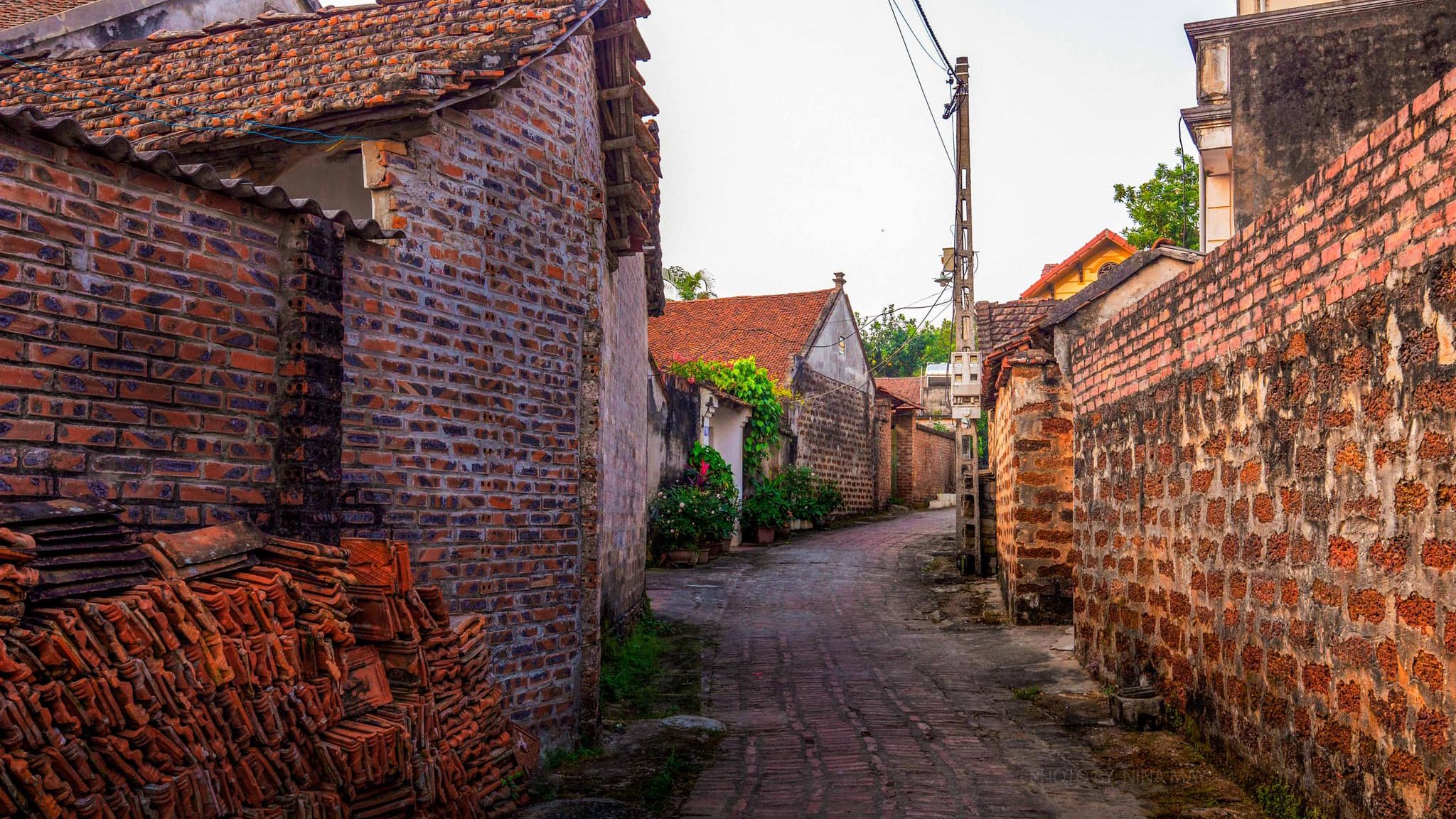

Duong Lam is a rare location that still preserves the overall beauty of an ancient village, featuring both common characteristics and unique traits that create its charm. This combination of values has made Duong Lam one of Hanoi’s most attractive tourist destinations. Today, visitors to Duong Lam have a variety of options: visiting important historical relics such as temples, pagodas, and communal houses; experiencing the charm of ancient homes and pathways made of laterite and red bricks; and exploring distinctive features such as village gates, ancient wells, and communal markets. The entire village serves as a "film studio" for tourists.
Duong Lam is a rare location that still preserves the overall beauty of an ancient village.
However, it would be remiss not to mention Duong Lam’s cuisine. Several restaurants in the village cater to visitors, and many ancient homeowners also offer local dining services. Duong Lam is known for its rural specialties, such as the famous Mia chicken, renowned for its delicious meat. One of the most elaborate dishes in Duong Lam’s cuisine is roasted pork. Pork belly is marinated with spices such as cumin, pepper, dried shallots, fish sauce, and salt.
The key ingredient that makes Duong Lam crunchy roasted pork attractive is guava leaves. Young guava leaves are chopped and marinated with the meat for about an hour, while the mature leaves wrap the meat before roasting. After being marinated, the meat is wrapped around a large bamboo pole lined with banana leaves inside. The roasting process is also very elaborate as the pork is grilled over charcoal, and it usually takes up to 6 hours to finish the roasting process.
A typical tray of food to welcome tourists in Duong Lam often includes Mia chicken, roasted pork, young rice cakes, vegetables, and fermented soy sauce. Sweets include ‘che lam' (nutty ginger sticky rice bars), ‘keo bot’ (candy made from molasses, ginger and sesame), and ‘keo doi’ (candy made from peanuts, sugar, vanilla, and glucose syrup).
Peaceful life in Duong Lam. (Photo: Nina May)
Crunchy roasted pork, a specialty of Duong Lam. (Photo: Giang Nam)
Many photographers visit the ancient village to capture peaceful and old moments.
An old woman is diligently making fermented soy sauce in front of her house
Sifting corn in the sun
Tourists to Duong Lam can participate in many activities, including visiting heritage sites, cycling to explore the countryside, enjoying cuisine, and resting in ancient houses.
Simple daily life in Duong Lam Village. (Photo: Nina May)
Simple daily life in Duong Lam Village. (Photo: Nina May)
Recently, the local authorities, in coordination with the Duong Lam Ancient Village Management Board, organised a programme every Saturday entitled ‘A Night in the Ancient Village’ at the gate of Mong Phu village.
The programme features stalls selling products made by the villagers, souvenirs, and typical dishes of Duong Lam Village.
There are also folk games and performances of traditional folk-art forms, such as dragon dance, drum dance, Chau Van (spiritual) singing, flute and Quan Ho (love duet) singing by members of arts clubs in the village. In addition, at village creative spaces, such as Doai Creative and Nghe Lang, visitors can learn about lacquer and join workshops and creative activities.
Duong Lam
Ancient Village
Published: October 2024
Production manager: Kieu Huong – Hong Minh
Content: Giang Nam
Design: Ngoc Diep
Photo: Nina May, Dang Khoi, Giang Nam
